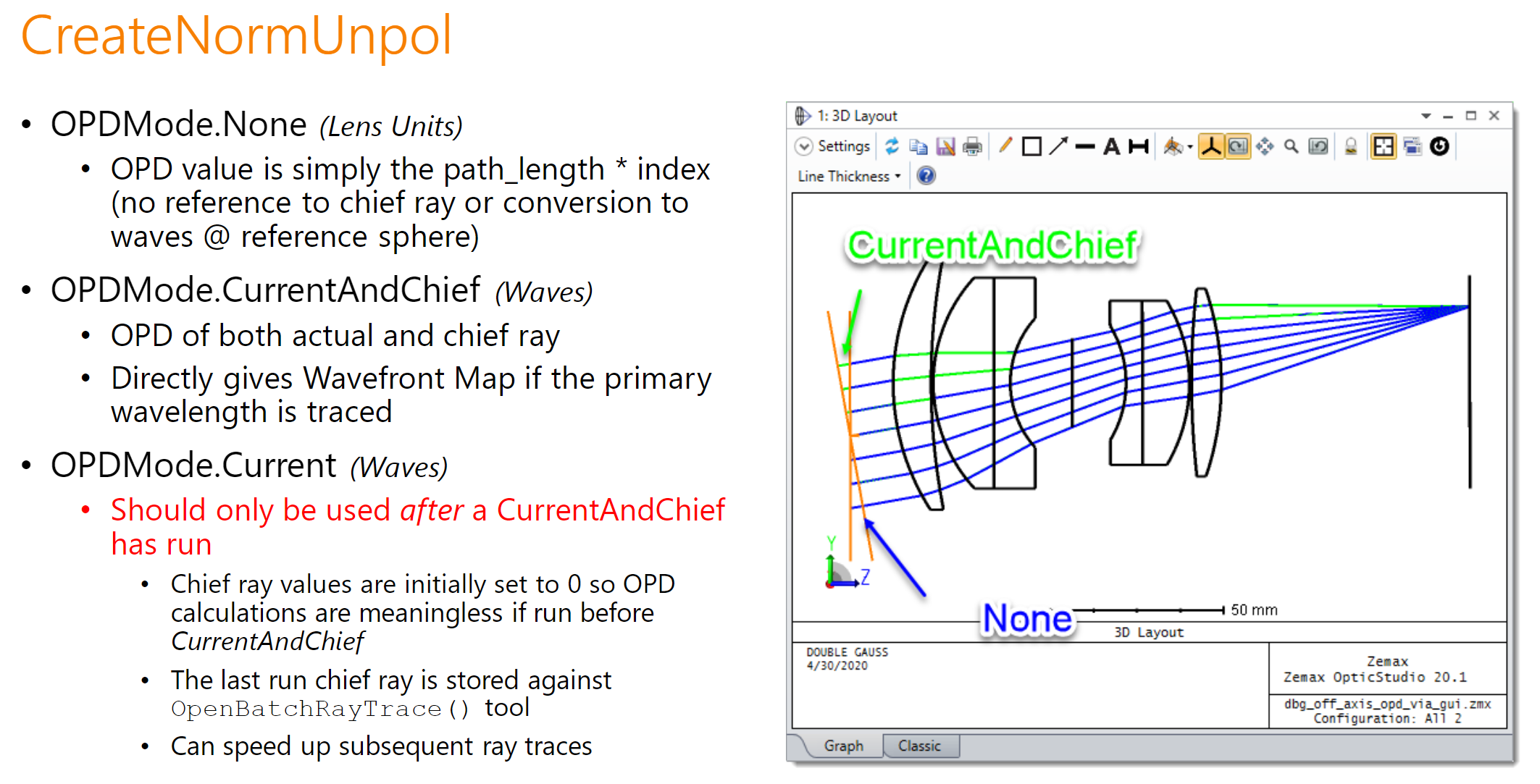Hello everyone,
What would be an elegant way of computing the path length (for every ray) from a direct unpolarized (sequential) batch ray trace in the ZOS API (since I don’t think it is returned by this tool, but correct me if I’m wrong)?
I was thinking of going surface by surface, each time finding the intercepts in X and Y, and computing the path length based on the Thickness between the two corresponding surfaces, but this requires a ray trace for each surface, and before I go in this direction I wanted to hear from other people’s experience.
Thanks for your help, and take care,
David





